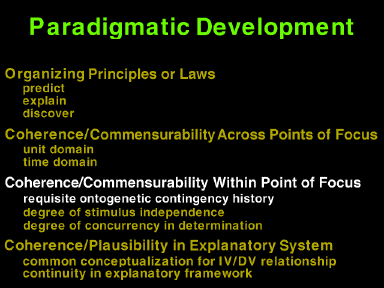 Slide 5-6
Slide 5-6

 Slide 5-6
Slide 5-6
The next issue is to partition short-term behavioral adaptation itself into dimensions which reduce complexity and give us a handle on understanding a meaningful amount of the output variance from the various functional relationships within learning. Our paradigm specifies them as: requisite, ontogenic contingency history, or how much specialized experience within the life of the individual is necessary for the obtained effect. Next is the degree of stimulus independence, or how much explicit stimulus control is necessary for the obtained effect? And finally, there is the degree of concurrency in determination, that is, how may different simultaneous factors are determining the output?
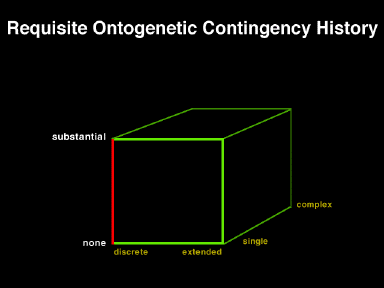 Slide 5-7
Slide 5-7
A cubic model allows the depiction of three orthogonal dimensions. The first is requisite ontogenic contingency history. This is sometimes referred to as canalization.
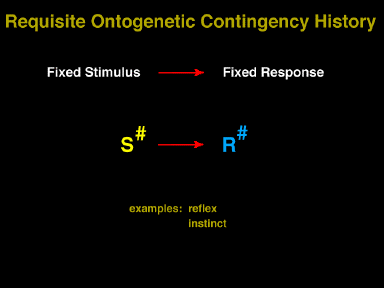 Slide 5-8
Slide 5-8
The lowest level of requisite, ontogenic contingency history is "none." A fixed stimulus produces a fixed response. This is a simple reflex.
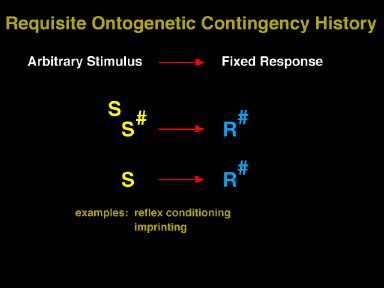 Slide 5-9
Slide 5-9
The next level is the production of a fixed response by an arbitrary stimulus as the result of nonrandom experience. Note that this does not require that the response controlled by the arbitrary stimulus be identical to the most obvious response to the original eliciting stimulus. This process has traditionally been labeled Pavlovian or reflex conditioning.
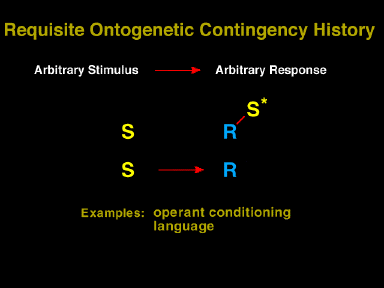 Slide 5-10
Slide 5-10
Exposure to contingencies also enable more flexible relationships to develop, such as those between arbitrary stimuli and arbitrary responses. This class is typically labeled operant conditioning.
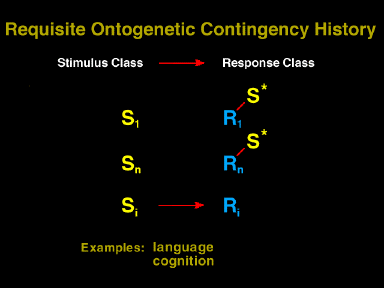 Slide 5-11
Slide 5-11
With even more extended exposure to contingencies (stimuli signalling reinforcement availability and stimuli signalling reinforcement unavailability), relatively arbitrary stimulus classes can come to control relatively arbitrary response classes. (Response classes are similarly formed by reinforcement and non-reinforcement.)